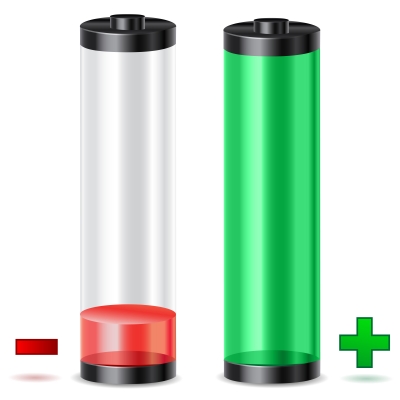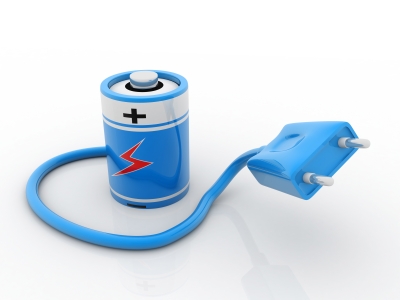Are we ready for untethered charging?
The promise of truly untethered charging may be nearer than we think, allowing devices to recharge over greater distances, as Philip Ling discovers.
With smart phones and other mobile devices about to be joined by a diverse array of remote sensors and wearable technology, keeping technology charged is becoming evermore troublesome. Energy harvesting provides part of the solution but for technology that needs to be ‘always on’ this represents a challenge. Battery technology continues to evolve but, arguably, what the industry really needs is a revolutionary - rather than evolutionary - step forward.
While wireless power transfer is fundamental to today’s way of life, the emergence of wireless charging embodied by closely coupled inductance has emerged as a potential solution. But technologies such as Qi still require the device to have a modified battery (or power pack) and a corresponding mat, upon which the device is placed and charged through inductive coupling. While this is undoubtedly building momentum, the concept of truly wire-free charging is even more enticing; it promises that, instead of placing our devices in a charging area, they can be charged just by being in the same room as the transmitter. Although limited in power transfer capability, today’s devices are typified by their ultra-low power requirements, so is the technology on the cusp of wide scale adoption?

Image courtesy of DigitalArt at FreeDigitalPhotos.net
Essentially the concept is that devices can be charged or powered while they are still in use; without the need to be plugged in, placed on or otherwise moved. Instead, power is transferred over distances measured in whole metres rather than a fraction. There is now a number of companies pioneering this technology, taking a range of approaches; UBeam uses ultrasound to transmit energy across distances, while others use more conventional wireless technology, employing vast arrays of antennas each transmitting small amounts of energy in a focused way to a single receiver. This allows relatively high levels of power to be transmitted - in some cases to several devices at once - without user intervention.
No more cables?
One such solution, expected to be demonstrated at CES in January 2015, comes from Energous; while it is still not giving away too many details, its CTO, Director and Founder, Michael Leabman, explained the fundamentals. He refers to the technology as ‘wire-free’ as opposed to wireless; differentiating it from solutions such as Qi which rely on small (or effectively no) distances between the charger and the device.
This means it will work up to distances of 15ft (around 5m), effectively covering an entire room, although that will depend on the device’s power requirements and the number of devices being charged from a single charger. For example, Leabman explained that the first solution will charge four devices at 4W at 5ft, or four devices at 2W over 5 to 10ft, or four devices at 1W at up to 15ft.
A single charging base station will be able to charge up to 24 devices at once, based on the total power requirements. This could, in theory, allow many IoT sensor nodes in close proximity to be powered by a single mains-connected transmitter, as power can be delivered continuously (going beyond 24 will require some form of time-division distribution). It achieves this by creating multiple ‘pockets’ of energy at 1/4W ‘intervals’, but it isn’t simply through using one antenna per 1/4W of power: “We actually use all of our array to focus the energy on every device, that enables us to have a very focused pocket; it’s probably different to what people think and it’s hard to do, but it gives us an advantage and the best efficiency.” Power is delivered using the same unlicensed bandwidths used by WiFi and the company is targeting devices that require 10W or less.

Image courtesy of CoolDesign at FreeDigitalPhotos.net
Another company with a similar approach is Ossia, which describes itself as an ‘early stage, technology-mature’ company. Its solution also uses unlicensed bandwidths but goes further to explain that power will actually be received through the same antennas used in the devices for WiFi or Bluetooth, over distances of up to 30ft. It’s also enabled by ‘smart antenna’ technology and the company claims that fitting it in to devices requires just a small IC.
Both technologies offer something that traditional chargers find difficult or cumbersome; charging many devices from a single point. The key to wire-free charging will therefore be in keeping the power requirements of the device low enough to benefit from the technology. While the semiconductor industry is pushing hard in this direction, the user demands are constantly rising and that spells more power. Software control is mentioned frequently by the developers of both solutions covered here, which indicates that there will be an opportunity for ‘quality of service’ to be added by providers. Perhaps wire-free charging will become a part of a mobile phone tariff, but there will inevitably be some form of billing required for public spaces. Security may also be an issue.
With the ink on patents for wire-free charging still drying, it’s no surprise that details are sketchy. However, that doesn’t stop the message getting out; wire-free charging is just around the corner (although it doesn’t necessarily go around corners) and soon we will all enjoy the freedom of our devices drawing power while still in our hands, pockets, bags or backpacks.


